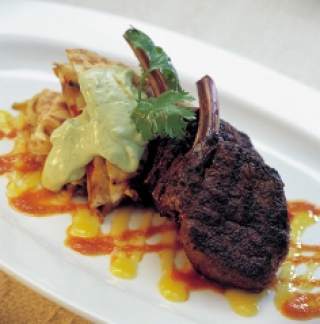
Get in on the Game.
20 October 2009By Colin Roche, CEC, CCE, CHE
Expose your students to a culinary experience that most likely know nothing about.
Game has come a long way, and today more and more chefs are increasingly featuring game dishes on their menus. The old belief that game meat is tough with strong flavors is quickly disappearing because today’s game is mostly farm-raised, making it tender and delicious. Though it usually has a stronger flavor than the meat of domesticated animals, it is also lower in fat, cholesterol and calories, while being higher in minerals and protein.
Due to its unique taste, popularity and health benefits compared to domesticated meats, game is a food product that all culinary students should be exposed to and is a great topic to add to the culinary curriculum. Some of the most widely available game animals found frequently on menus is venison, rabbit, wild boar, bison and game birds.
Venison is available farm-raised throughout the year, and most varieties (deer, antelope, elk, etc.) can be purchased. Venison is a dark, lean meat with little or no marbling. The loin and rack are two common cuts that are very tender; therefore, dry cooking techniques are best for these cuts. Moist and combination cooking methods should be used for the leg, however, because it is less tender.
Rabbit is usually farm-raised on ranches and are available year ‘round. Often compared to chicken, rabbit meat is lean and tender, with a mild flavor. Roasting and sautéing are appropriate cooking methods for rabbit loin. Rabbit legs are tougher and benefit from braising and stewing.
Wild boar is related to domesticated hog and is raised today on farms and ranches, making it available year ‘round. Boar meat is leaner than pork, with a darker color and a more intense flavor. Culinary applications and cooking techniques for boar are similar to those used for pork.
North American bison, or buffalo, has made a comeback after having been hunted almost to extinction. Bison is now raised on reserves and ranches like beef cattle. Moist and full of flavor, bison meat is similar to lean beef and is suited to the same cooking techniques.
The game-bird industry in the United States sells millions of birds each year to restaurants and customers, with quail, pheasant and partridge being among the most popular varieties. Quail is the smallest game bird, with lean, dark and mild-tasting meat. Pheasant has a mild flavor and has become the most popular of all game birds. The meat of partridge is generally tougher, with a more pronounced, gamier taste than quail or pheasant.
The easiest and quickest way to add game to a lesson plan is to prepare some alongside a domesticated protein and conduct a taste comparison. You could then generate a discussion with your students that ties into that day’s lecture, including flavor profiles, nutritional benefits and cooking applications of game versus domesticated meats.
So add some game into your lesson plans and start exposing your students to a culinary experience that the majority of them most likely know nothing about!
Colin Roche, CEC, CCE, CHE, is department chair at Johnson and Wales University’s College of Culinary Arts in North Miami, Fla.
Photo credit: Cervena Venison New Zealand
